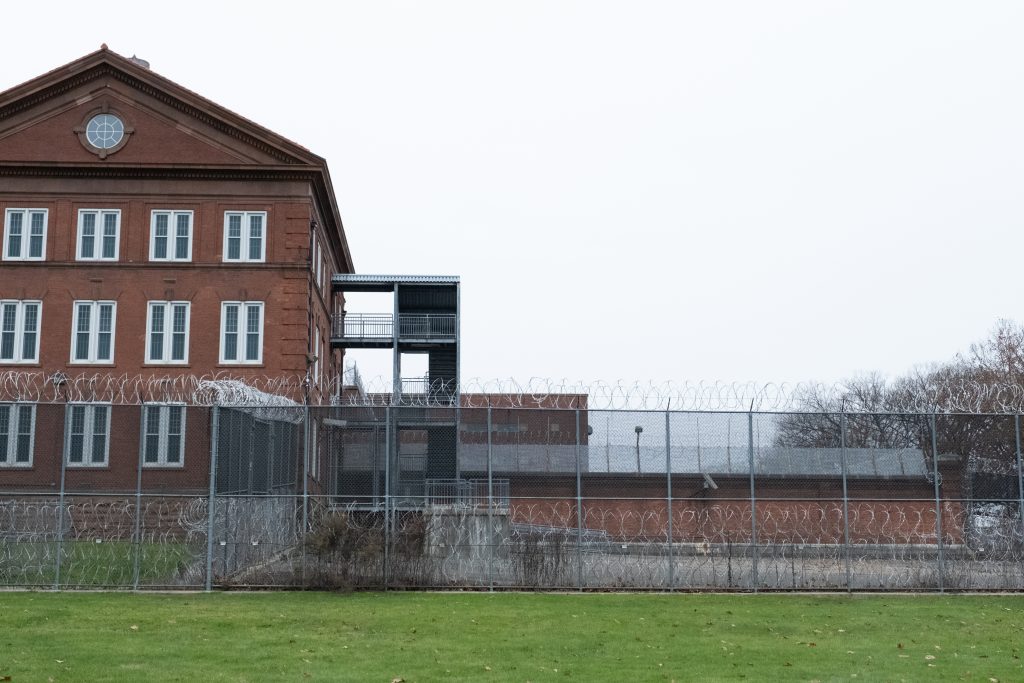Last year incarcerated people became broadly eligible for financial aid in the form of Pell Grants — a $7,395 annual tuition stipend for low-income college students.
In response, Connecticut officials within higher education, corrections and government institutions, together with people who have been incarcerated, are working to coordinate access to high-quality postsecondary education for as many individuals in the prison system as possible.
They convened this week, in several locations around the state, to discuss their efforts and hear from groups leading similar initiatives in other states, including Minnesota and Maine. The University of Connecticut’s Institute for Municipal and Regional Policy, IMRP, facilitated the events on behalf of the Criminal Justice Policy and Planning Division within the governor’s budget office.
Division Undersecretary Daniel Karpowitz — who spent 20 years with the Bard Prison Initiative and authored a book about it — called the Pell Grant expansion a “watershed moment.”
“We envision this work as building from strength,” Karpowitz said to those gathered Tuesday in Hartford. “We’ll figure out how to do this together.”
That “strength” Karpowitz mentioned includes 11 existing higher ed programs within Connecticut’s corrections facilities. CT State, Goodwin University, Quinnipiac University, Trinity College, Wesleyan University and Yale University all offer classes — in some cases degree programs — at various locations.
The 1994 Violent Crime Control and Law Enforcement Act eliminated Pell eligibility for incarcerated people. But in 2015, the Education Department under President Barack Obama launched the Second Chance Pell Experimental Sites Initiative, which made tuition aid available to students at roughly 70 correctional institutions nationwide.
Since then, the movement has gained momentum. In 2020, as part of its efforts to simplify the FAFSA, Congress ended the ban on Pell Grants for incarcerated students. That went into effect in July of 2023.
Andrew Clark, director of the IMRP, said Connecticut’s programs faced setbacks during the pandemic, but they’re back up and running — and anticipate growing.
“There’s just a confluence of things coming together that allows this to be a really unique time,” he said. “A lot of different higher education institutions that weren’t considering it in the past now see it as not only a tremendous opportunity but also an obligation.”
In light of the expanded Pell eligibility, Connecticut leaders are working to assess the need and demand for college in prison. Earlier this year, the General Assembly approved legislation calling for the budget office and Corrections to conduct the assessment and produce a report by Jan. 1, 2025.
One of the challenges facing program administrators is a wide variance in sentence status among the state’s correction population. About 35% are currently awaiting judgment in their cases. Those who are serving sentences face different lengths of time remaining. Leaders acknowledged the need to carefully plan for students who might transition from one setting to another in the midst of their studies.
Kevin Neary, the policy analyst leading the report effort, provided a progress update to attendees at the IMRP event Tuesday. He said his goal is “to create a shared understanding of the landscape” and present best practices from other state programs. Neary said he hopes the report will answer several questions, including, “What are some of the barriers already that we can identify? What are some of the opportunities? And what is that demand? What happens with those barriers influencing that demand, and if we change some of those barriers, who might benefit?”
Neary said the Criminal Justice Policy and Planning Division aims to produce additional reports, to be published in 2025 and 2026, that will examine, among other things, “the longitudinal outcomes and impacts of higher education over time” on people who have enrolled in the programs.
Later that day, students and educators offered their thoughts and recommendations during a panel discussion. Several people emphasized the importance of recognizing the range of personal and administrative issues — as well as the trauma — each student is dealing with.
“The things that I need are very different from a student outside,” said Abraham Santiago, a former student who now serves as policy advisor with the group Second Chance Educational Alliance.
“My aptitude was there, my skills were there. I just needed a place to apply them,” said Stacy Burnett, an alum of the Bard Prison Initiative who now works as a senior manager with JSTOR Access In Prison Initiative, which provides a library of scholarly work.
Burnett said higher education programs for incarcerated people sometimes focus too narrowly on training people for jobs in fields that need workers. The liberal arts education she got through BPI “enabled me to go in so many other directions,” she said. “We do need opportunity, but we also need some autonomy to dream about what that opportunity could look like for a meaningful life for ourselves.”

